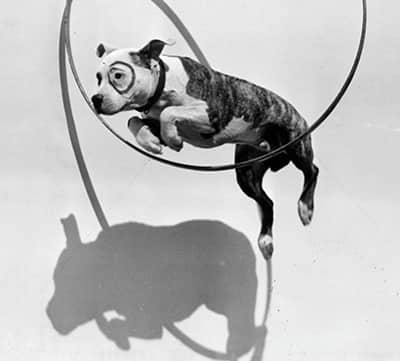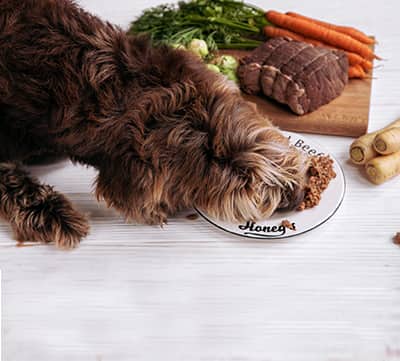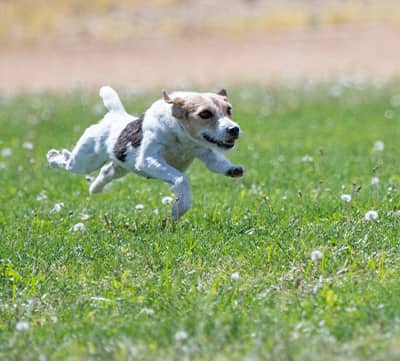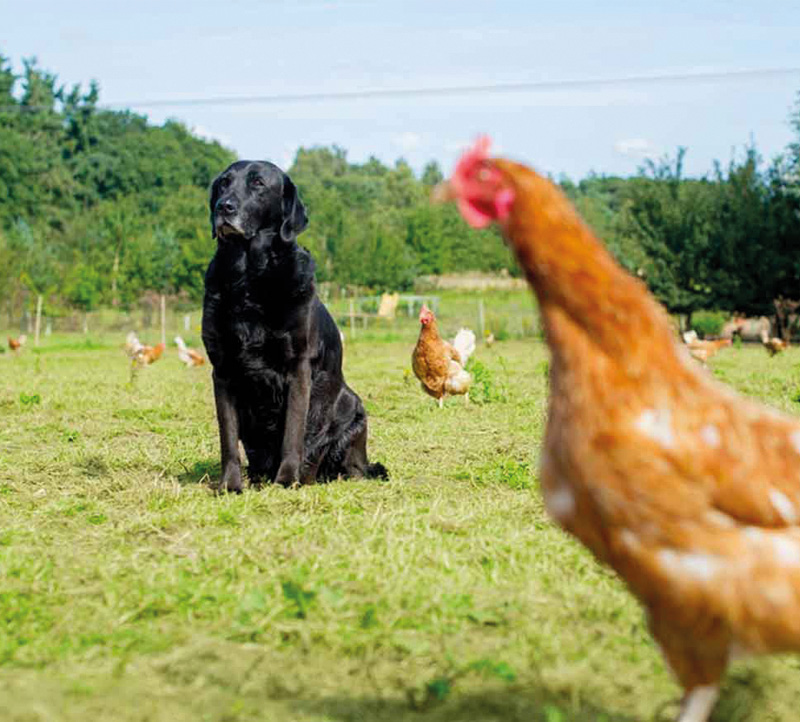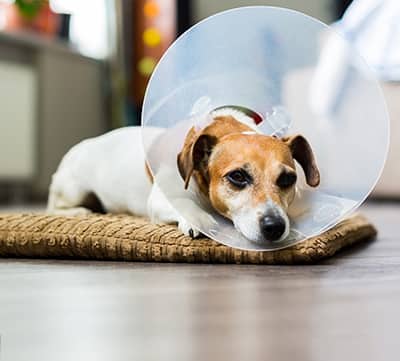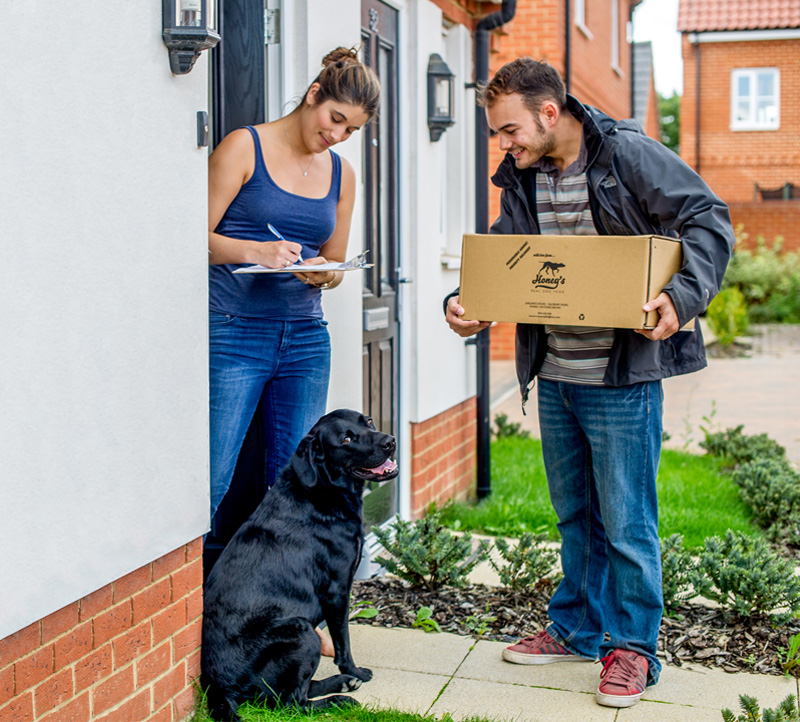A bluffer’s guide to natural feeding
Pressed for time but keen to understand the basics of natural feeding? Confused by what you have read or heard elsewhere? Here is a summary of everything that you need to know to bluff your way with the best.
Dogs should be fed a biologically appropriate diet
Every creature on earth must consume the diet it is biologically most appropriate to eat; otherwise, it will get ill and may (if the diet is really inappropriate) die. For the first 4 million years of dogs’ existence on earth they certainly didn’t eat canned food or kibble. Four million years? Yes, that’s how long grey wolves have been around, and dogs and wolves are classified as the same species. When wolves were domesticated (around 8,000–20,000 years ago), we humans changed their outer appearance through breeding, but not their internal organs or digestive systems.
In the wild, dogs eat prey and not much else
Dogs are carnivores (they do need a bit of herbage and if push comes to shove can survive on it) as even a cursory glance at their anatomy reveals. Like other predatory mammals they have powerful muscles, fused wrist bones and a cardiovascular system that supports both sprinting and endurance. And there’s a reason why you don’t want to get bitten by a dog: their mouths are positive Swiss Army knives, with five kinds of exceedingly sharp teeth. Leave them to their own devices and they will eat small birds and beasts (rabbits, mice, squirrels &c.) and a share of larger prey (sheep, deer, boar &c.). What’s more, they eat the whole animal, including its bones.
Canine digestion is nothing like human digestion
Dogs have no digestive enzymes in their saliva (unlike humans) and very large, expandable stomachs (they can eat 5% of their body weight at a single sitting, which would be like someone who weighs 10 stone eating seven pounds of food in one go) not to mention indescribably strong stomach acids (strong enough to burn your fingers). Their digestive system is designed so that they can tear off chunks of raw meat, crunch up raw bones and swallow the lot whole. The lack of digestive enzymes in their saliva and their inability to move their jaws from side to side (necessary to grinding food) is why they gulp everything down. The entire digestive process takes place in their stomach.
Give a dog a bone
In the wild up to a third of a dog’s nutrition (including calcium, magnesium, complex fats and vitamins) may come from bones. Bones keep their teeth and gums clean (it has been proven that dogs with healthy teeth live longer) and exercise their upper bodies and jaw. Providing the bones are raw (cooked bones can splinter), they are 100% safe for dogs to eat.
Dogs are extremely indifferent cooks
When food is cooked, its chemical structure is altered and most of the enzymes, amino acids and so forth are destroyed. From a dog’s perspective, about 70% of its nutritional value is thus lost. Dogs need their food served raw in order to digest it properly. There is a reason why dogs are extremely indifferent cooks.
Dog poo
Natural feeders talk a lot about poo. Dogs fed a natural diet produce very little of it, what there is being firm and chalky.
Dogs don’t eat regular, balanced meals
Regular, balanced meals are fine for humans, but not for dogs. In the wild a healthy dog may not eat for up to a week at a time. When they come across an ingredient that their bodies tell them they need in order to stay healthy (for instance a particular grass containing useful trace minerals) they simply eat it. Dogs are designed to get the nutrition they require over time. This is called the ‘balance over time’ approach.
What is wrong with processed dog food?
It doesn’t matter which brand of dog food you use or how much it costs, it is never going to be as good for your dog as raw, fresh meat, bone and vegetable. The key problems are:
- It is cooked. Cooking destroys the vast majority of the nutritional value of the food from a dog’s perspective and makes it exceedingly difficult to digest.
- It can contain inappropriate and damaging chemicals (binders, colouring, preservatives and other additives). These may be absorbed through the bowel wall and transported to other organs, with a range of harmful effects.
- The quality of the ingredients is usually poor. Even expensive dog food often has very, very low-quality ingredients.
- Most dog foods contain a high percentage of grain (including rice), which is unsuitable for the canine digestive system and causes allergies.
- It generally fails to clean the dog’s teeth and gums, allowing plaque to build up. This gives rise to periodontal disease and worse.
Dogs can’t digest grain
Dogs must not be fed grain, because they can’t digest it properly. One of the main reasons why dogs fed on processed food produce so much – ahem – waste matter is because of the grain. Grain is also one of the main causes of skin allergies, diabetes and flatulence.
The switch
Natural feeders sometimes refer to the time they moved their dog onto raw food as ‘the switch’. The longer ago you made the switch, the more you will be respected in raw feeding circles. The switch itself can usually be made instantly. A very small percentage of dogs have to be weaned onto raw food but the vast majority take to it immediately. The only dogs that shouldn’t eat a 100% raw diet are those with a compromised immune system or those that have just undergone bowel surgery.
The BARF movement
If you are going to bluff your way in natural feeding, you will hear a great deal about the BARF diet, which is the same thing. BARF stands for Biologically Appropriate Raw Food, a rather revolting acronym thought up by a brilliant Australian vet called Ian Billinghurst. The other big natural feeding hero is Tom Lonsdale (also a vet), who heads up the Raw Meaty Bones lobby.
It couldn’t be easier to feed raw
As a bluffer you will want a simple recipe. Try 80% raw, lean-ish meat and 20% grated or puréed raw vegetables (but not potato). The meat can be anything – chicken, lamb, beef, rabbit, pork, venison, squirrel, whatever – and you can mince it or serve it in chunks. Include a bit of offal. From time to time add in the odd egg, spoon of oil (cod liver, for instance), tin of pilchards, spoon of natural yoghurt &c. Make sure your dog gets plenty of raw bones – chicken wings will do if that’s easier for you.
For more information and advice please contact Honey’s – we’ll be happy to help even if you never, ever plan to become a customer.
Web: www.honeysrealdogfood.com
Email: info@honeysrealdogfood.com
Telephone: 01672 620 260
